#Python Full Course Tutorial
Explore tagged Tumblr posts
Video
youtube
Python for Data Analytics - Full Course Tutorial
🧮 Course Problems & Certificate 👉 https://lukebarousse.com/python 📝 Course Code & Notes 👉 https://lukeb.co/python_repo
#python for data analytics#free education#Python Full Course Tutorial#education#python#python full course
0 notes
Text
SAS vs. R vs. Python: Which Tool is Best for Data Analysis and Visualization?
What is SAS Programming?
SAS (Statistical Analysis System) is a software suite used for advanced analytics, business intelligence, data management, and predictive analytics. It’s widely used in industries like healthcare, finance, and government, particularly for data analysis that requires a high level of precision and regulatory compliance.
SAS programming is especially popular for:
Data manipulation and cleaning,
Statistical analysis and reporting,
Predictive modeling,
Business intelligence and visualization.
SAS programming has a long history, making it one of the most trusted tools for enterprises handling large datasets. Its ability to handle complex analyses and integration with databases makes it a solid choice for corporate environments.
If you're new to SAS, enrolling in a SAS online training course can be a great way to get started. These courses will help you understand the fundamental concepts and give you practical skills to effectively use SAS for your data science projects.
What is R?
R is an open-source programming language specifically designed for statistical computing and data visualization. It has a large and active community that continually contributes to its vast library of packages. R is widely used in academic research, statistics, and data science.
R is a strong choice for:
Statistical analysis (advanced statistical tests, hypothesis testing, etc.),
Data visualization (with libraries like ggplot2),
Machine learning (through packages like caret, randomForest, and xgboost).
One of R's biggest strengths is its ability to generate stunning data visualizations, making it ideal for projects where presenting data insights visually is important. Additionally, R is favored for its statistical analysis capabilities, especially when you need to perform complex statistical models or tests.
For those just starting out with R, following a R programming tutorial or taking a structured course can help you get comfortable with its syntax and functions.
What is Python?
Python is one of the most popular general-purpose programming languages used across multiple fields, including data science, web development, artificial intelligence, and more. Its versatility and simplicity have made it a favorite among data scientists and developers alike.
Python is widely used for:
Data analysis (with libraries like Pandas and NumPy),
Machine learning and deep learning (with frameworks like TensorFlow, scikit-learn, and PyTorch),
Data visualization (using libraries like Matplotlib and Seaborn).
Python’s syntax is straightforward and easy to understand, making it a great option for beginners. It's also highly extensible, meaning you can integrate it with other languages and tools, making it perfect for a wide variety of tasks. Moreover, Python's rich ecosystem of libraries for machine learning, data manipulation, and visualization make it a top choice for data science projects that involve predictive modeling, automation, and AI.
SAS vs R vs Python: Key Differences
Now that we’ve briefly covered what each tool is good at, let’s dive deeper into how SAS programming, R, and Python compare when it comes to their suitability for data science projects:
1. Ease of Use
SAS: SAS has a steeper learning curve, especially if you're new to programming. However, its comprehensive documentation and user support make it a solid choice for those who need to quickly learn the basics. If you want to get up to speed fast, you can consider taking a SAS online training course, which provides structured guidance and real-world examples.
R: R has a more complicated syntax than Python but is tailored for statisticians, making it ideal for data analysis and complex mathematical tasks. Learning R can be a challenge at first, but many R programming tutorials provide helpful examples to guide beginners.
Python: Python is known for its simplicity and readability. It has a very straightforward syntax that is easy to learn, making it ideal for beginners. It also has a vast community, so you can easily find resources and tutorials to get started.
2. Data Handling and Performance
SAS: SAS excels in handling large datasets, especially when working in enterprise environments. It is optimized for performance in complex data management tasks and can process massive amounts of data without crashing. This makes it a go-to for industries like finance and healthcare, where data accuracy and performance are crucial.
R: R is very efficient for statistical analysis, but it can struggle with very large datasets due to its memory limitations. For smaller to medium-sized datasets, R is great. However, if you're dealing with very large data sets, R can become slow, unless you use specific packages like data.table.
Python: Python, with libraries like Pandas and NumPy, is excellent for handling datasets of varying sizes. It performs well with medium to large datasets and offers a variety of tools to scale up for big data through integration with distributed computing systems like Hadoop and Spark.
3. Statistical Analysis
SAS: SAS is known for its powerful statistical analysis capabilities, including regression analysis, ANOVA, time-series analysis, and more. It is trusted for high-quality, validated results, making it a great choice for sectors like healthcare, where accuracy is essential.
R: R is an excellent choice for performing complex statistical analysis. It has a wider array of built-in statistical tests and models than SAS or Python. With extensive libraries for statistical analysis, R is often the go-to language for statisticians and data scientists focused on research.
Python: Python offers good statistical analysis capabilities through libraries like SciPy and StatsModels, but it's not as extensive as R when it comes to statistical modeling. However, Python’s real strength lies in its machine learning capabilities, which have grown rapidly thanks to libraries like scikit-learn.
4. Machine Learning and AI
SAS: While SAS is excellent for traditional statistical analysis, it is not as flexible as Python when it comes to machine learning and AI. However, SAS does have tools for machine learning and is frequently used for predictive modeling and analytics in enterprise environments.
R: R is not as commonly used for machine learning as Python, but it still offers strong libraries for building machine learning models, like caret, randomForest, and xgboost. It’s more widely used in academic and research settings for statistical modeling and analysis.
Python: Python is by far the most popular language for machine learning and AI. With frameworks like TensorFlow, Keras, scikit-learn, and PyTorch, Python allows you to build complex models for deep learning, machine learning, and artificial intelligence. If your data science project involves these areas, Python is the clear winner.
5. Data Visualization
SAS: SAS offers built-in tools for data visualization like SAS Visual Analytics and PROC SGPLOT, which are powerful in a business setting. However, they are less flexible than the visualization tools offered by R and Python.
R: R is a data visualization powerhouse. With libraries like ggplot2 and plotly, R can generate stunning, customizable plots and charts. If your project requires intricate and detailed visualizations, R is a top choice.
Python: Python has excellent visualization libraries like Matplotlib, Seaborn, and Plotly. These libraries are easy to use, and Python’s flexible syntax allows you to create a wide range of visualizations, making it a great choice for data scientists who need to quickly explore and present data.
Conclusion: Which Tool Should You Choose?
When deciding between SAS programming, R, and Python, the best tool depends on your specific needs:
Choose SAS if you're working in an enterprise environment where data handling, performance, and regulatory compliance are crucial. SAS online training or a SAS programming full course can help you gain expertise in these areas.
Choose R if your project focuses heavily on statistical analysis and data visualization, especially if you’re in academic research or healthcare.
Choose Python if you want an all-around tool for data science, with strong support for machine learning, AI, and general data manipulation. Python is the go-to tool for data scientists looking to explore, analyze, and visualize data at scale.
For beginners, starting with a SAS programming tutorial or enrolling in a SAS online training course can help you quickly grasp the basics of SAS programming. Whether you choose SAS, R, or Python, mastering one of these tools will set you on the path to success in your data science career.
#sas programming course#sas tutorial#sas online training#sas programming#sas programming full course#python#r programming
0 notes
Text
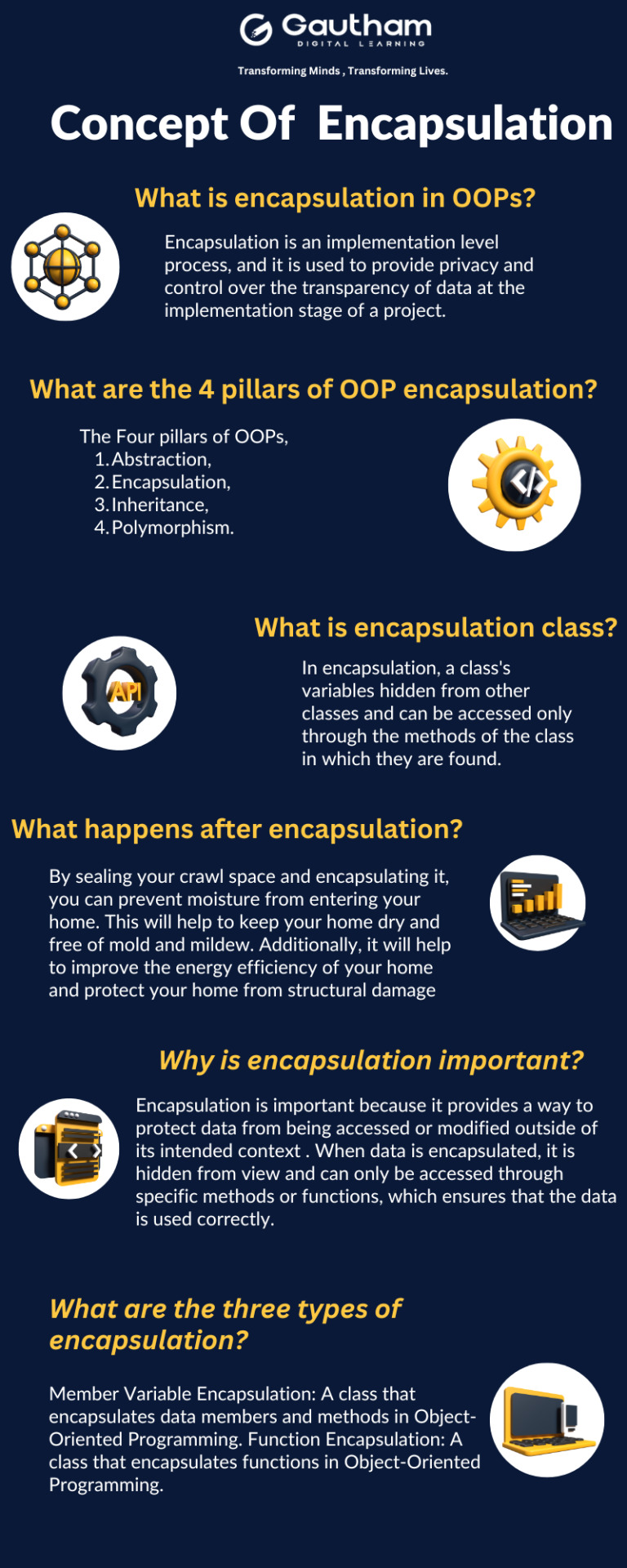
Are you looking to embark on a journey into the dynamic world of full-stack development with Python? Look no further! Gautham Digital Learning offers comprehensive Python full-stack training in Hyderabad.
BEST PYTHON TRINING IN HYDERABAD
#python course#python language tutorial#python language course#python programming#python full stack course#python training#reading
0 notes
Text
Complete Excel, AI and Data Science mega bundle.
Unlock Your Full Potential with Our 100-Hour Masterclass: The Ultimate Guide to Excel, Python, and AI.
Why Choose This Course? In today’s competitive job market, mastering a range of technical skills is more important than ever. Our 100-hour comprehensive course is designed to equip you with in-demand capabilities in Excel, Python, and Artificial Intelligence (AI), providing you with the toolkit you need to excel in the digital age.
To read more click here <<
Become an Excel Pro Delve deep into the intricacies of Excel functions, formulae, and data visualization techniques. Whether you’re dealing with basic tasks or complex financial models, this course will make you an Excel wizard capable of tackling any challenge.
Automate Your Workflow with Python Scripting in Python doesn’t just mean writing code; it means reclaiming your time. Automate everyday tasks, interact with software applications, and boost your productivity exponentially.
If you want to get full course click here <<
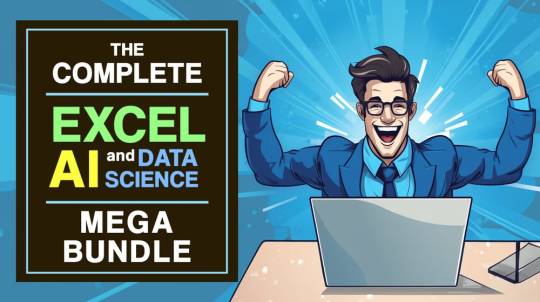
Turn Ideas into Apps Discover the potential of Amazon Honeycode to create custom apps tailored to your needs. Whether it’s for data management, content tracking, or inventory — transform your creative concepts into practical solutions.
Be Your Own Financial Analyst Unlock the financial functionalities of Excel to manage and analyze business data. Create Profit and Loss statements, balance sheets, and conduct forecasting with ease, equipping you to make data-driven decisions.
Embark on an AI Journey Step into the future with AI and machine learning. Learn to build advanced models, understand neural networks, and employ TensorFlow. Turn big data into actionable insights and predictive models.
Master Stock Prediction Gain an edge in the market by leveraging machine learning for stock prediction. Learn to spot trends, uncover hidden patterns, and make smarter investment decisions.
Who Is This Course For? Whether you’re a complete beginner or a seasoned professional looking to upskill, this course offers a broad and deep understanding of Excel, Python, and AI, preparing you for an ever-changing work environment.
Invest in Your Future This isn’t just a course; it’s a game-changer for your career. Enroll now and set yourself on a path to technological mastery and unparalleled career growth.
Don’t Wait, Transform Your Career Today! Click here to get full course <<
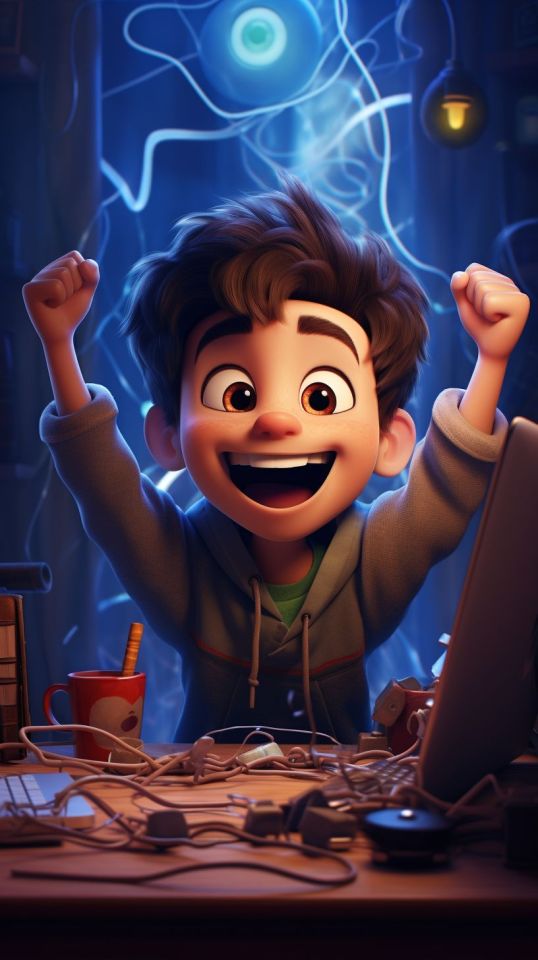
#data science#complete excel course#excel#data science and machine learning#microsoft excel#difference between ai and data science#learn excel#complete microsoft excel tutorial#difference between data science and data engineering#365 data science#aegis school of data science#advanced excel#excel tips and tricks#advanced excel full course#computer science#ms in data science#pgp in data science#python data science#python data science tutorial#Tumblr
1 note
·
View note
Text
What is the Purpose of Python training?
The purpose of Python training is to teach you the basics of the Python programming language. Python is a general-purpose programming language that is used for a variety of tasks, including: Web development Data science Machine learning Artificial intelligence Automation Python is a popular choice for beginners because it is easy to learn and use. It is also a powerful language that can be…
View On WordPress
#python#python programming#python tutorial#learn python#what is python#what is python used for#python tutorial for beginners#python for beginners#python course#python crash course#python basics#learn python programming#python full course#python language#python training#python programming language#what is python good for#python from scratch#python programming tutorial#python (programming language)#how to learn python#how fast is python
0 notes
Note
Hi! You mentioned there are online tutorials/sites for learning Comp Sci and OSINT - any recommendations? Thanks!
Hi! You got lucky that today is the day I check my inbox lol. So. For comp-sci: - CS50X from Harvard is a public avaiable course on youtube I'd 100% recommend. These are the undedited (so far) lectures of 2024: https://www.youtube.com/watch?v=3LPJfIKxwWc&list=PLhQjrBD2T381WAHyx1pq-sBfykqMBI7V4&ab_channel=CS50
This gives you all the basics you need to understand how coding and pcs in general works. (I had comp sci in my university course)
- Freecodecamp is a website full of FREE tutorials on several programming language. Advice: learn python. You will understand later on.
- The rest really depends on what you actually want to learn and why - each programming language has its own purpose and application. OSINT: -There is this full course: https://www.youtube.com/watch?v=qwA6MmbeGNo&t=205s&ab_channel=TheCyberMentor (But you can find more on youtube.) - Bellingcat's resources: https://www.bellingcat.com/category/resources/ -IntelTecniques: https://inteltechniques.com/ - Osint Newesletter: https://osintnewsletter.com/
But here is the catcher: if you plan to do osint it heavily depends on where you live. I'm in Europe, so it means I'm under GDPR, therefore I must abid to stricter regulations than a US OSINT analyst. A lot of data that might be considered public domain in the US(big one: conviction records) are not in europe, and you won't be able to access it unless you are a registered private investigator at least (but in my case it's rare that I go after people, that's not a part of any task I might encounter at work). Not only that, but a lot of the avaiable tools are designed to work only with specific countries in mind for various reasons and there is a big bias on US-based investigations. If youre' not in the US I recommend you reach out to your local OSINT or cybersecurity professionals association, they usually have resources and specific information, a lot of times for free. Also keep in mind: OSINT has a lot of different applications and it depends on what you're doing with it. Journalists might work more with satellites and images (a thing I know nothing about), debunkers will definitely understand social media more, if you do business intelligence you will look more at news sites, trademarks and deposits and so on to reach your conclusion. You did your course... Now what? I recommend getting on CTFs, like tracelabs that I've linked above, but there many of them (osint dojo for example) or Kase Scenarios. These are safe environments to practice on (except for tracelabs since it deal with actual cases of missing people and it can lead to... not so good leads, allow me to leave it there) You should also understand how intelligence (as the discipline) works. There are several resources, but my favourite is definitely Psychology of Intelligence Analysis. It's a series of declassified training documents from CIA analyst Richard Bauer, that was based on Daniel Kahneman (yes, the "thinking fast and slow" author, and I also do recommend this book) research on euristics. Intelligence is fundamental because OSINT might be helpful to gather the data, but the data then needs to be processed, analysed and you also need to get a conclusion from that analysis. Studying intelligence will help you avoid a lot of pitfalls that happens when you do an investigation, such as not understanding when you know enough, if you're being a victim of your own bias, if you're missing something or if you're going with the right approach. But I have to admit that the best of training I've received so far is from my local OSINT association because I've been able to train with people that work(ed) in the military, get their advice and have a deep understand of the work itself (and the reason why I have decided to actually make cyber threat intelligence my job, even if I work for a private company and I have no interest in working for the government). And yes ethics is a big thing for the OSINT community.
I hope this is helpful enough!
10 notes
·
View notes
Text
Want to learn something new
Want to learn something new in 2022??
Absolute beginner adult ballet series (fabulous beginning teacher)
40 piano lessons for beginners (some of the best explanations for piano I’ve ever seen)
Excellent basic crochet video series
Basic knitting (probably the best how to knit video out there)
Pre-Free Figure Skate Levels A-D guides and practice activities (each video builds up with exercises to the actual moves!)
How to draw character faces video (very funny, surprisingly instructive?)
Another drawing character faces video
Literally my favorite art pose hack
Tutorial of how to make a whole ass Stardew Valley esque farming game in Gamemaker Studios 2??
Introduction to flying small aircrafts
French/Dutch/Fishtail braiding
Playing the guitar for beginners (well paced and excellent instructor)
Playing the violin for beginners (really good practical tips mixed in)
Color theory in digital art (not of the children’s hospital variety)
Retake classes you hated but now there’s zero stakes:
Calculus 1 (full semester class)
Learn basic statistics (free textbook)
Introduction to college physics (free textbook)
Introduction to accounting (free textbook)
Learn a language:
Ancient Greek
Latin
Spanish
German
Japanese (grammar guide) (for dummies)
French
Russian (pretty good cyrillic guide!)

Jan 2, 2023
Want to learn something new in 2023??
Cooking with flavor bootcamp (used what I learned in this a LOT this year)
Beekeeping 101
Learn Interior Design from the British Academy of Interior Design (free to audit course - just choose the free option when you register)
Video on learning to read music that actually helped me??
How to use and sew with a sewing machine
How to ride a bike (listen. some of us never learned, and that's okay.)
How to cornrow-braid hair (I have it on good authority that this video is a godsend for doing your baby niece's black hair)
Making mead at home (I actually did this last summer and it was SO good)
How to garden
Basics of snowboarding (proceed with caution)
How to draw for people who (think they) suck at art (I know this website looks like a 2003 monstrosity, but the tutorials are excellent)
Pixel art for beginners so you can make the next great indie game
Go (back) to school
Introduction to Astronomy (high school course - free textbook w/ practice problems)
Principals of Economics (high school course - free textbook w/ practice problems)
Introduction to philosophy (free college course)
Computer science basics (full-semester Harvard course free online)
Learn a language
Japanese for Dummies (link fix from 2022)
Ukrainian
Portuguese (Brazil)
American Sign Language (as somebody who works with Deaf people professionally, I also strongly advise you to read up on Deaf/HoH culture and history!)
Chinese (Mandarin, Simplified)
Quenya (LOTR fantasy elf language)

Dec 26, 2023
Want to learn something new in 2024??
Beginner-oriented video on how to sail
This guy has so many videos on baking different types of bread. SO very many.
Coding in Python - one of the most flexible and adaptable high-level programming languages out there - explained through projects making video games
Learn to swim! (for adult learners. I don’t care if you live in Kansas or Mali or wherever. LEARN TO SWIM.)
Learn how quantum mechanics works. Then read some more about it
[Learn about quantum mechanics again, but in a more advanced engineering/mathematics class. Then read more about the math and physics of it]
Poetry Handbook, by Mary Oliver
Something I learned this year: how to sew a quilt (Here’s a very easy beginning pattern that looks amazing and can be done with pre-cut fabric!)
How to hit the ball in softball
Tutorial video on what is under the hood of most (gas) cars + weird engine sounds and what they mean
Full beginner mechanics technical training, if you want to go more in depth
Playlist on how car engine physics work if you want to go ultra in depth
Lecture series on architecture design through study of buildings
How (American income) taxes & tax law work (choose “audit course” at checkout for free class)
Pickleball for beginners (so you can finally join your neighbor/friend/distant cousin who is always insisting you join their team)
+ Para-Pickleball for beginners (for mobility aid users!)
School is so much more fun when there’s no tests:
American Law - Contracts
Shakespeare’s Life and Plays
Fairy Tales: Meanings, Messages, and Morals
Modern Poetry
World History [Part 1, Part 2]
Learn a language:
Arabic + Resource Guide compiled from Reddit (includes info on different dialects)
Chinese (Cantonese) (audio)
Urdu (frequently recommended course on Reddit) + Resource Guide
Yucatec Maya
33 notes
·
View notes
Text

Python Isn’t Just a Language—It’s a Weapon. Learn It Loud in Kochi. 💻
You’re not here for basics. You’re here to build, break, and rebuild with purpose. At iROHUB Infotech, the Python course in Kochi is a full-throttle, no-fluff, real-world experience for those who are done playing safe. From zero to pro, you’ll write code that breathes life into automation, web apps, AI, and more — not in theory, but in the wild. You’ll work on real projects, face real challenges, and come out with skills employers actually want. This isn’t a tutorial playlist. It’s an evolution. If you’re ready to think logically and speak in Python, iROHUB is your battlefield.
Dare to code differently? This is your signal.
For more information, visit: https://www.irohub.com, [email protected]
#softwaretraininginstituteinkochi#python#ios#kochi#mobile app development#technology#tech#computer#smart tech
2 notes
·
View notes
Note
do you happen to know any site building tutorials to follow and learn from? been having a hard time finding a place to start with my own neocity but the free reign and customization of them interests me a lot :0c
ABSOLUTELY! I do want to stress one thing if HTML/CSS is something you're not familiar with: It's okay if your website doesn't look like the most creative, eye-popping thing in the world! I've seen sooooooo many people get so discouraged because their beginner websites don't look like the flashier websites you see on Neocities' front page (by people who've been coding for a Long Time, mind you!) and like!!! That's fine!!! The code of my own site was quite possibly the worst thing you've ever seen thrown together into one big CSS soup before I Literally Just Rewrote It Today, After A Year Of Having A Neocities. And so, with that being said:
As anyone on the internet might do, w3schools is the absolute first place I'd recommend to beginners! There are videos, it's mostly a text-based learning site with lots of exercises to test your knowledge. If you'd prefer videos:
My personal favorite guy on Youtube to learn coding things from is Giraffe Academy: Here's his full course on HTML! The video itself is about two hours—I skimmed through it and everything seems to be perfectly oriented towards beginners (I haven't watched it in its entirety, but I have seen his videos on C# and Python [programming languages, don't worry about it] and they did a lot to help explain certain things to me that I didn't know previously!).
BroCode's HTML in 1 hour and CSS in 1 hour are pretty good! His videos do include a little bit on how to implement some JavaScript here and there, but nothing major or terrifying.
Here's a playlist of HTML/CSS tutorials in bite-sized videos, too! Think about 10-25 minutes per video.
I will say that searching for YouTube videos on HTML/CSS will always sort of gear more towards what people in the professional sphere are looking for rather than what you'd see on Neocities.
As for Neocities-specific things (which may be the actual point of your ask! Might've misinterpreted the hell out of it oops):
sadgrl.online is perhaps the most known website on Neocities, largely because the website itself not only has a layout maker you're free to use if you want to make a website now but the thought of writing HTML/CSS from scratch terrifies you, but also HTML/CSS guides themselves! There's also a bunch of links you can use to help fluff up your site a bit, generate HTML code for you, or just fluff up your site in general.
The Melonland Project is also dedicated to providing website development tools and tutorials for beginners: here is its guide to making a website on Neocities! It also provides a link to learnlayout.com, which I'll link here as well—a website for helping you learn CSS layouts!
And, once you've got the hang of how CSS works but are still feeling unable to code it yourself (no ideas? just not feeling up to it? FUCK MAN DO I UNDERSTAND THAT) Eggramen has free CSS pages you can use, and all you have to do is write the HTML for it!
But I would always focus more on learning HTML first before any CSS—and then learning how to integrate CSS into HTML via inline styling (which those video tutorials do!) before worrying about any external stylesheets or whatever. HTML is the actual building block—CSS just makes it look pretty.
#'site-building' tutorials will almost always lead you to like. coding bootcamps and stuff for companies#the nc-specific links should be more help in just building a site on nc!#anyway. hope to god i didn't misinterpret this question HAHA#asks
12 notes
·
View notes
Text
How to install malt/BEER
NPR render engine for Blender
What is malt and BEER?
From the official website:
Malt is a fully customizable real-time rendering framework for animation and illustration. It's aimed at artists who want more control over their workflow and/or their art style, with special care put into the needs of stylized non-photorealistic rendering. Designed as a community effort to expand the possibility space of 3d rendering, it provides graphics programmers and technical artist an enjoyable “shadertoy-like” workflow inside Blender, while still allowing to effortlessly share their work with non technical artists through Python and GLSL plugin Official website mal3d.com
Blender Extended Expressive Renderer (BEER) is a free and open source realtime non-photoreal (NPR) rendering engine. The main feature of BEER is the ability to extend the rendering capability from the ease of adding custom shaders to a customizable shader graph. Since NPR is a journey of endless styles which never settle, we need a render engine which will fulfill all the stylized needs. Light BWK, co-founder of BlenderNPR.org
It's a free and Open source real time render engine made with full focus on Non Photorealistic Rendering or Stylized rendering. It distinguish itself from other engine by being extremely customizable for the most skilled among us
Showcase:

Made by @/Renato3xl

Made by myself @axiasart
The only inconvenience with this render engine is the terrible terrible (needed to be said twice) lack of up to date tutorials. This shouldn't confuse people in thinking that this project is dying or unpopular. The latest release was on July 20th.
How to download and install malt/beer?
Downloading malt is pretty straightforward, on the github release page: https://github.com/bnpr/Malt/releases/tag/Release-latest

blender preference, enabled Malt render
Downloading and installing BEER is more complicated, first of course downloading it from github: https://github.com/bnpr/BEER
From the zip you will only need the BlenderBeer folder so you should extract is and put it anywhere.
You will also need to download Pygments which is found here: https://github.com/pygments/pygments/tree/master
You won't need the whole thing, once you download the zip, extract the pygments folder only.
Now that we have all the ingredients we can start cooking.
First you will need a script folder, put it where you keep your blender files. Then in this script folder add two folders modules and addons.
Next, you move the pygments folder in the modules folder and the BlenderBeer folder in the addons folder.
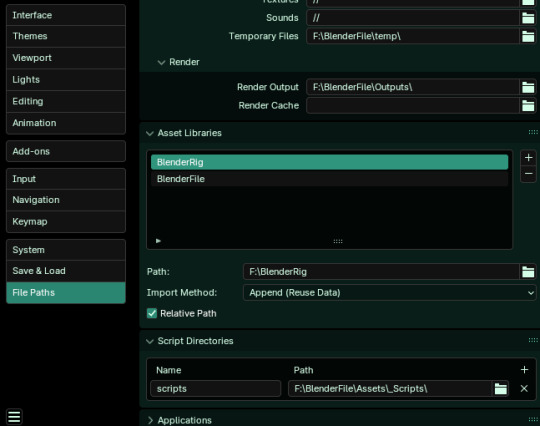
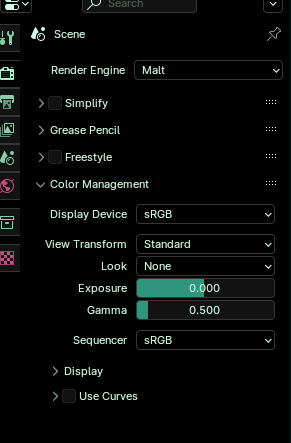
#artists on tumblr#tutorial#blender#3d#3d artwork#render engine#malt render engine#npr#bnpr#3d texturing#digital art#3d art#art study
3 notes
·
View notes
Text
O2A2 Daily Log. DAY/NiGHT 1 (July 5th, 2024)
I'll be posting these until I get to the game's development conclusion!
Day I.
It was around 10 AM when I started working. My initial process laid in drafting the story. After deciding on the main character (in this case, Amaranth) I stripped the story to its two components – place and premise – because in other cases it’d be down to building the plot off of a character, and my mind runs wild whenever I construct it like that.
The place is the library, where souls come after they’ve passed, so an Afterlife Library. And the premise is quite simple – it’s a game for the player’s life! In this case, instead of a gamble it all comes down to outsmarting the machine, ahem, the experienced librarian.
And as a person who barely knows Python beyond freely coding in Ren’py, I wandered to the search engine to find a tutorial and realised that I’ll probably be better off searching on Reddit. One of the posts gave me a really good idea – the OP was talking about imagebuttons and logic and then it clicked for me.
Tic-tac-toe is a game where you draw the image inside the grid spaces, taking turns and adjusting your movements to your opponents’... Was it possible to code something like that?!
(duh, of course it was, this log is a testament to that)
I started by cropping the supposed “images” (solid blocks of two colours – one for the scroll and one for the charcoal), and cropped tiny squares of the scroll's colour. So the layering was like this – background scroll - big dark square - vertical box full of horizontal boxes of scroll’s colour, creating the illusion of a drawn grid, when in reality it is not.
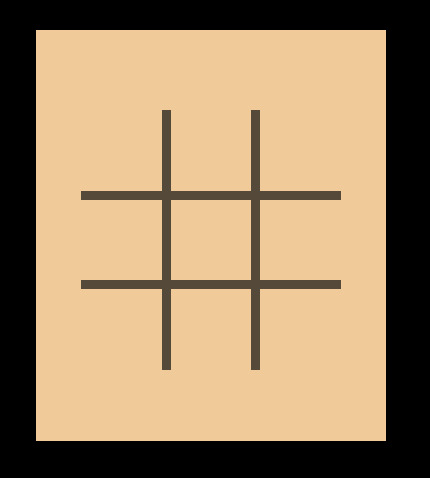
And this marks the beginning of my two-hour suffering. I ditched the idea of imagebuttons that I wanted to go with, since that’d require assets, which I only could use one of. So I opted for textbuttons, and it was the most Hell I’ve had coding.
At first I couldn’t get them to show up. Then, I remembered to set a box just for them (x/y maximum of 70ish, since the squares are 90), had nightmares doing the horizontal and vertical boxes, and increased the font. Hooray! Visible!
Setting a variable on click with “action” function was easy, and soon enough I could fill an entire board with. Xs and Os. Time to code Amaranth’s turn in! (scared)
It wasn’t as scary as I imagined: basically, all tiles are “if” functions, and if they’re empty the player can fill them. If it’s not their turn, they’re not active, and Amaranth is quick to respond (I did a test to see if she’d fill an empty cell and she did!)
Then came the invisible (for now) work – I coded in a win condition. I SCREAMED WITH JOY WHEN I SAW THAT MY ARRAYS FINALLY UPDATED!

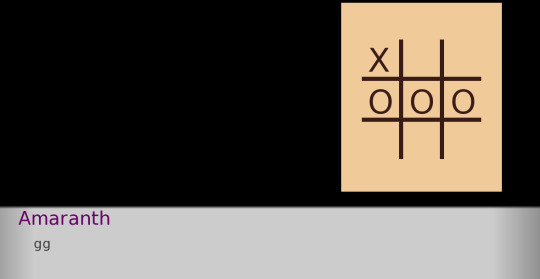
That concluded my day-work!
Night I.
So I decided to push forward and actually coded in her responses!
I took and hardcoded the first two turns for her Xs and the rest was assigned at random. As for Os, I made it do everything at random, since she’s more experienced at playing Xs! (totally not because I didn’t want to look at tic-tac-toe ever again)
Each turn the machine checks if there are any free spaces and if any of the rows match winning conditions. If they do, the player gets to the end plot (I still haven’t written any of it, aaaa!). If they don’t, the game continues until it’s a draw or X’s/O’s win.
With that, I finally slumped into the bed. Even with taking breaks it was kind of a hard exercise to be jumping straight into after a. Year. Of not working with Python’s syntax.
[I’ve cut off a huge text segment of me trying to design a less clunky random placement system, but all of my endeavours led to dead ends caused by my inexperience and complex requests. Thank you for all the answers, StackOverflow! So many people asking the same question, it makes me feel like we’re all a part of a big community…]
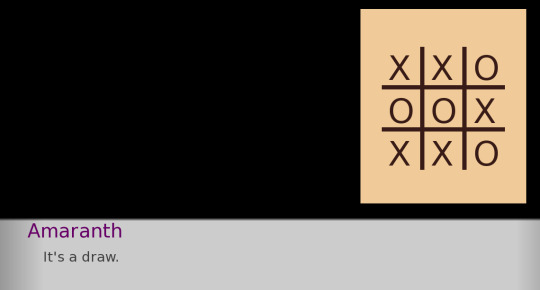
#nitunio.txt#nitudev#< lord knows i wont be using this tag much after the jam#o2a2#o2a2 vn jam#game jam#renpy
3 notes
·
View notes
Text
free digital marketing courses , web development tutorials free , accounts courses online free
Institute Unleash your potential with ADC's free digital marketing courses, web development training, and online accounting courses
Are you ready to improve your knowledge and skills? MR Institute ASDC is your best choice! We're committed to giving people the tools they need to succeed in the digital age with our comprehensive range of free digital marketing courses, web training, and online courses.
As MR Institute ASDC, we understand the importance of staying ahead of others in today's competitive environment. That's why we're making our best courses free to make them accessible to all students who need them. Whether you're a professional looking to improve your skills or a beginner looking to break into the world of digital marketing, web development, or finance, our courses support all skill levels.
Key Features of Our Free Courses:
Digital Marketing Courses: From SEO and social media marketing to email marketing and Good content, our digital marketing courses cover everything in the digital space. Many topics are essential for success. Learn how to use multiple digital channels to engage your audience and turn a profit.
Web Development Training: Learn more about the basics of web development with our comprehensive training. Whether you're interested in front-end development with HTML, CSS, and JavaScript, or want to explore the ins and outs of back-end development with languages like Python or PHP, our guides offer step-by-step advice to help you. You. Improve your skills from the source.
Online Accounting Courses: Gain a deeper understanding of accounting concepts and practices with our free online courses. From basic writing to effective financial analysis, our courses provide the knowledge and skills you need to effectively manage your finances, whether in a professional setting or for personal use.
Why choose MR Institute ASDC?
< br>Expert teaching: Our courses are designed and taught by industry experts with many years of experience in their fields, ensuring you receive the best training possible.
Interactive Learning: Participating in interactive activities, quizzes, and events deepens your understanding of key concepts and allows you to apply new skills in the real world.
Simple and easy: With 24/7 access to study materials, you can study at your own pace and in your own time, allowing you to balance your studies with other commitments.
Certificate: When you complete our courses, you will receive a certificate of completion that proves your new skills and enhances your employer sales credentials.
Don't miss this opportunity to invest in your future. Whether you're looking to advance your career, start a new business, or simply expand your horizons, MR Institute ASDC can support you on your journey to success. Sign up online now for our free digital marketing courses, web development courses, and account lessons, and take the first step toward unlocking your full potential!
2 notes
·
View notes
Text
Want to learn something new in 2024??
Beginner-oriented video on how to sail
This guy has so many videos on baking different types of bread. SO very many.
Coding in Python - one of the most flexible and adaptable high-level programming languages out there - explained through projects making video games
Learn to swim! (for adult learners. I don’t care if you live in Kansas or Mali or wherever. LEARN TO SWIM.)
Learn how quantum mechanics works. Then read some more about it
[Learn about quantum mechanics again, but in a more advanced engineering/mathematics class. Then read more about the math and physics of it]
Poetry Handbook, by Mary Oliver
Something I learned this year: how to sew a quilt (Here’s a very easy beginning pattern that looks amazing and can be done with pre-cut fabric!)
How to hit the ball in softball
Tutorial video on what is under the hood of most (gas) cars + weird engine sounds and what they mean
Full beginner mechanics technical training, if you want to go more in depth
Playlist on how car engine physics work if you want to go ultra in depth
Lecture series on architecture design through study of buildings
How (American income) taxes & tax law work (choose “audit course” at checkout for free class)
Pickleball for beginners (so you can finally join your neighbor/friend/distant cousin who is always insisting you join their team)
+ Para-Pickleball for beginners (for mobility aid users!)
School is so much more fun when there’s no tests:
American Law - Contracts
Shakespeare’s Life and Plays
Fairy Tales: Meanings, Messages, and Morals
Modern Poetry
World History [Part 1, Part 2]
Learn a language:
Arabic + Resource Guide compiled from Reddit (includes info on different dialects)
Chinese (Cantonese) (audio)
Urdu (frequently recommended course on Reddit) + Resource Guide
Yucatec Maya
Want to learn something new in 2022??
Absolute beginner adult ballet series (fabulous beginning teacher)
40 piano lessons for beginners (some of the best explanations for piano I’ve ever seen)
Excellent basic crochet video series
Basic knitting (probably the best how to knit video out there)
Pre-Free Figure Skate Levels A-D guides and practice activities (each video builds up with exercises to the actual moves!)
How to draw character faces video (very funny, surprisingly instructive?)
Another drawing character faces video
Literally my favorite art pose hack
Tutorial of how to make a whole ass Stardew Valley esque farming game in Gamemaker Studios 2??
Introduction to flying small aircrafts
French/Dutch/Fishtail braiding
Playing the guitar for beginners (well paced and excellent instructor)
Playing the violin for beginners (really good practical tips mixed in)
Color theory in digital art (not of the children’s hospital variety)
Retake classes you hated but now there’s zero stakes:
Calculus 1 (full semester class)
Learn basic statistics (free textbook)
Introduction to college physics (free textbook)
Introduction to accounting (free textbook)
Learn a language:
Ancient Greek
Latin
Spanish
German
Japanese (grammar guide) (for dummies)
French
Russian (pretty good cyrillic guide!)
#actually on time this year yay#hope I balanced it well between different themes & things to learn - I at least try to!#as well as throw in the fun and obscure things#2024#happy new year!!!#Also psa that obviously the best way to learn ANY language is from immersive learning. These are just to get you started
332K notes
·
View notes
Text
8 Advantages of Choosing Coding Brushup for Java Programming Success
In the world of software development, Java continues to reign as one of the most in-demand programming languages. It powers everything from enterprise-level applications to Android development, making it an essential skill for aspiring developers. But to truly master Java and make yourself industry-ready, you need more than just YouTube videos and outdated tutorials. That’s where Coding Brushup comes into play.

Whether you're just beginning your coding journey or looking to upgrade your current skill set, Coding Brushup for Java programming offers a comprehensive and career-focused learning experience. Let’s explore the 8 key advantages of choosing this platform for your Java training—and why it’s trusted by thousands of learners across India and beyond.
1. Expert-Led Instruction by Industry Professionals
The backbone of any great training program is its instructors. At Coding Brushup for Java, you’ll be learning from professionals who have hands-on experience in real-world software development. These mentors aren’t just academically sound—they work or have worked with top tech companies and bring a wealth of industry insights into the classroom.
2. Industry-Relevant Curriculum and Java Frameworks
Coding Brushup’s Java curriculum is built to match current tech industry demands. Rather than sticking to just theory, the course takes you from the basics of Java syntax to advanced topics such as:
Object-Oriented Programming (OOP)
Collections and Multithreading
JDBC, Servlets, and JSP
Spring, Spring Boot, and Hibernate
RESTful API development
Deployment on AWS or other cloud platforms
3. Real-World Projects and Portfolio Development
When recruiters look at candidates, they’re not just checking for certifications—they want to see what you’ve built. Coding Brushup for Java places a strong emphasis on hands-on learning through:
Mini-projects after each module
Capstone projects based on real-world scenarios
Live coding sessions and hackathons
4. Career-Oriented Java Bootcamp Format
If you're serious about accelerating your career, the Java Bootcamp at Coding Brushup is tailor-made for you. Designed as an intensive 12–16 week program, it includes:
Full-time or part-time schedules
Structured curriculum with weekly goals
Regular assessments and mentor feedback
Dedicated career coaching
This bootcamp approach is ideal for students, career switchers, or working professionals aiming to break into the software industry quickly.
5. Full Stack Developer Pathway with Java Backend
One of the best things about Coding Brushup for Java is how seamlessly it integrates into their Full Stack Developer program. If you're looking to become a versatile developer, this track teaches:
Frontend: HTML, CSS, JavaScript, React/Angular
Backend: Java with Spring Boot and MySQL
Tools: Git, Docker, Jenkins, CI/CD pipelines
This combination gives you end-to-end knowledge of building scalable web applications, making you a full-stack expert—a profile highly sought after by tech recruiters.
6. Python and Cross-Language Skill Development
Beyond Java, Coding Brushup for Python is another high-quality offering. Whether you're diving into data science, backend development, or automation, Python is an essential tool—and Coding Brushup ensures you're well-equipped.
The Python course includes:
Python basics and OOP
Data structures and algorithms
Django and Flask frameworks
Intro to data analysis and machine learning basics
7. Placement Assistance and Career Support
A key reason why Coding Brushup is considered the best institute for Java programming is their 100% placement assistance. Here’s what you can expect:
Resume building and LinkedIn optimization
1-on-1 interview prep and mock technical interviews
Access to a network of hiring partners and startups
Internship opportunities and job referrals
With a dedicated placement team, Coding Brushup helps bridge the gap between learning and employment, making your transition into the IT industry smoother.
8. Flexible Learning Options and Affordable Pricing
Coding Brushup for Java is accessible to everyone—thanks to its flexible learning models and budget-friendly pricing. Choose the format that fits your lifestyle:
Live online classes with mentor interaction
In-person classroom training in selected cities
Self-paced video courses for convenience
Tuition is competitively priced, with EMI options, scholarships, and free trial classes available. It’s a smart investment in your future with a high ROI, especially when compared to more expensive coding bootcamps.
Conclusion:-
Whether you’re aiming to become a backend developer, a full-stack engineer, or even expand into Python and automation, Coding Brushup is your trusted learning partner. With expert mentorship, real-world projects, flexible learning options, and strong career support, it’s easy to see why so many learners choose Coding Brushup for Java programming.
Plus, if you're exploring broader paths, the Coding Brushup for Full Stack Developer and Python bootcamp programs provide everything you need to become a well-rounded developer in today’s competitive tech market.
#coding#programming#Coding Brushup for Python#Python bootcamp#Java certification course#Full Stack Developer training#Coding Brushup for Full Stack Developer#Java bootcamp
0 notes
Text
How to Start a Career in Data Science with No Technical Background
If you’ve ever thought, “Data science sounds fascinating, but I don’t have a tech background,” you’re not alone — and you’re definitely not out of luck.
Here’s the truth: you don’t need to be a coder, a statistician, or a data engineer to start a career in data science. What you need is curiosity, consistency, and the right approach.
This blog will walk you through exactly how someone from a non-technical field — like marketing, finance, operations, education, or even arts — can break into the world of data science.
Step 1: Understand What Data Science Actually Is
Start by learning the basics of data science — what it means, how it's used, and the kind of problems it solves.
Think of data science as a combination of three core elements:
Math and Statistics – to make sense of data
Programming – to work with and process that data
Business Understanding – to know which problems are worth solving
The best part? You can learn all of this at your own pace, even if you’re starting from zero.
Step 2: Start with Tools You’re Familiar With
If you’ve used Excel or Google Sheets, you’ve already worked with data.
From there, you can gradually move to tools like:
SQL – to pull data from databases
Python – to manipulate, analyze, and visualize data
Power BI or Tableau – to create dashboards and visual stories
There are beginner-friendly platforms and tutorials available to help you learn these tools step-by-step.
Step 3: Focus on Real-World Applications
Don’t try to memorize formulas or force yourself to master every algorithm. Instead, focus on how data science is used in the real world:
In marketing to measure campaign performance
In HR to predict employee attrition
In finance to detect fraud
In supply chain to optimize delivery routes
Relating concepts to your current domain makes learning not only easier but more enjoyable.
Step 4: Work on Projects, Not Just Theory
Even if you’re still learning, try to work on mini-projects using publicly available datasets from Kaggle or government portals.
For example:
Analyze sales data and build a forecast model
Explore customer churn patterns for a telecom company
Create a dashboard showing COVID-19 trends
These projects will become part of your portfolio, making you stand out when applying for jobs.
Step 5: Keep Learning, Keep Growing
The field of data science evolves fast. Stay updated by:
Following data science communities on LinkedIn
Watching free courses and tutorials
Reading blogs and case studies
Connecting with mentors or peers online
Ready to Get Started?
If you're serious about breaking into data science, there's no better time than now — and no better way than starting with a free beginner-friendly course.
🎥 Check out this free YouTube course on Data Science that explains core concepts, tools, and techniques — all in simple, easy-to-follow language:
👉 Click here to watch the full course
You don’t need a tech degree — just a desire to learn and take the first step. Your data science journey starts today!
0 notes